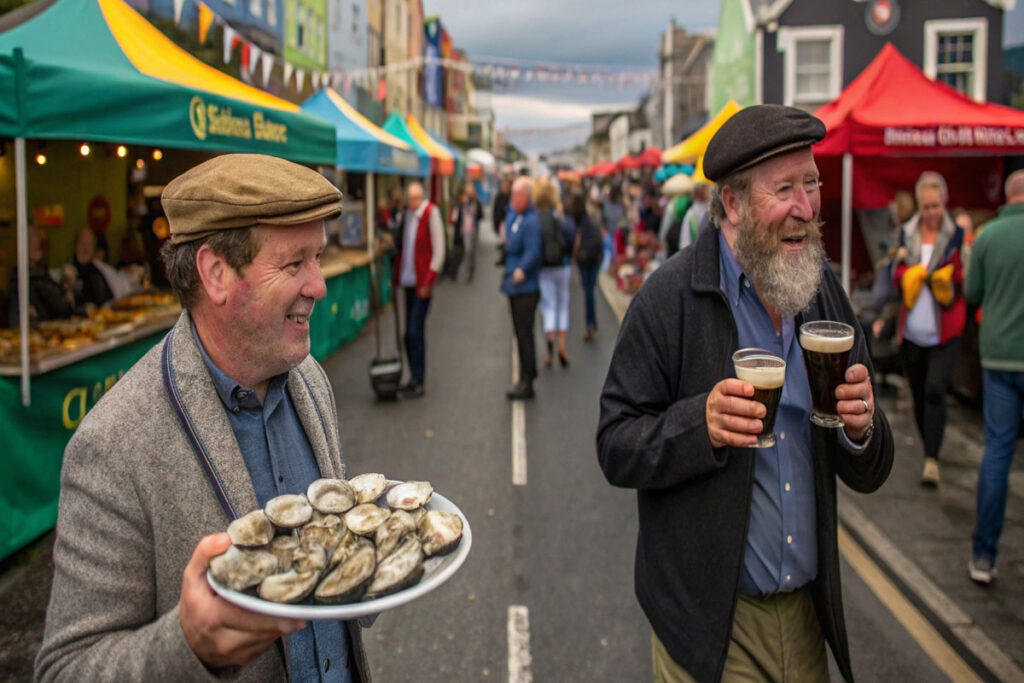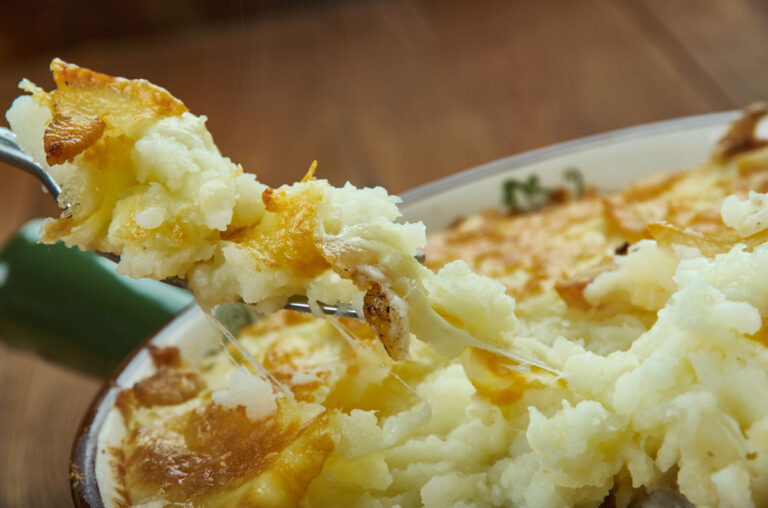Roots of the Pairing: Sea and Stout
Before they were ever romanticized on menus or lauded as a quintessential Irish pairing, oysters and Guinness came from humble, honest beginnings—born from the land and sea, bound by class, convenience, and custom.
In 18th- and 19th-century Ireland and Britain, oysters were not a luxury food. Far from the posh shellfish of today, they were cheap, abundant, and widely consumed by the working class. Pulled fresh from the Irish coast, oysters were sold by the bucket and eaten in taverns, markets, and street corners. Their briny, mineral bite made them a perfect companion to something dark, hearty, and rich.
That something was stout.
Guinness, first brewed in 1759 by Arthur Guinness, was gaining ground as Ireland’s go-to drink. Its creamy head, robust body, and slightly bitter finish made it a bold yet comforting beverage. As it became more accessible, it landed squarely on the same tables as oysters—not by marketing strategy, but by sheer compatibility.
In a time before refrigeration, oysters were best enjoyed fresh and raw, and stout—especially Guinness—offered a palate-cleansing balance that enhanced the experience. The stout’s roasted malt notes played beautifully with the saline sweetness of the oyster, and so the pairing took root in the public imagination.
It wasn’t a luxury. It was survival. It was sustenance.
And soon, it became tradition.
From Pub Fare to Prestige: The Evolution of the Pairing
What began as a humble working-class combination slowly rose through the ranks of culinary culture. In the 19th and early 20th centuries, as the industrial revolution reshaped cities and dining habits, both oysters and Guinness underwent transformations—some expected, others surprising.
Oysters, once harvested in vast quantities along Irish and British shores, began to dwindle due to overfishing, pollution, and changing sea temperatures. As supply decreased, their price and prestige rose. What was once street food became salon fare, appearing on the tables of gentlemen’s clubs, banquets, and fine restaurants. Oysters were no longer the everyday food of dock workers—they had become a delicacy.
Guinness, meanwhile, was solidifying its place as Ireland’s most iconic stout. It adapted to changing tastes, improved its brewing processes, and expanded globally. By the 20th century, it was no longer just a Dublin drink—it was an Irish ambassador, poured in pubs from Boston to Brisbane.
As the status of both items shifted, their pairing remained—resilient, nostalgic, and increasingly celebrated. Food writers, chefs, and drinkers began to recognize the natural harmony between the two: the silky bitterness of Guinness enhancing the oceanic umami of the oyster.
By the mid-20th century, the Guinness and oyster pairing had moved from rustic necessity to refined tradition. It became a feature at oyster festivals, brewery events, and coastal celebrations—a culinary callback that honored the past while enjoying the best of the present.
Taste Chemistry: Why They Actually Work Together
The pairing of oysters and Guinness isn’t just a historical fluke—it’s backed by genuine flavour chemistry. These two seemingly contrasting items create a sensory experience greater than the sum of their parts.
Let’s break it down:
1. Salinity Meets Roast
Fresh oysters bring a briny, oceanic saltiness that dances on the tongue. Guinness, with its roasted barley and deep malt profile, offers notes of coffee, chocolate, and toast. Together, the saltiness of the oyster enhances the beer’s subtle sweetness and roast, while the stout tempers the oyster’s mineral tang. It’s a perfect push-and-pull.
2. Texture Harmony
Oysters are slick and silky; Guinness is famously smooth and creamy due to its nitrogen carbonation. That shared mouthfeel creates a luxurious, almost seamless transition between bites and sips—elevating the pairing from mere contrast to full-on harmony.
3. Umami and Body
Both oysters and Guinness are umami-rich. Oysters contain glutamates naturally, and Guinness’s depth and body provide a similar savoury satisfaction. That shared umami base builds layers of flavour with each taste, enhancing the richness of both.
4. Clean Finish
Guinness, though full-bodied, has a dry finish. This means that after you swallow, it doesn’t linger heavily on the palate. That makes it an excellent cleanser between oysters, keeping your taste buds sharp and ready for the next one.
This isn’t just good food and drink—it’s chemistry in action. The pairing works on a biological level, delivering contrast, complement, and satisfaction in perfect balance.

On the Festival Circuit: Galway, Guinness, and Gathering by the Sea
Nowhere is the love story of oysters and Guinness more joyfully celebrated than on the shores of Ireland—especially in Galway, where the salty breeze carries more than sea air; it carries tradition.
The Galway International Oyster & Seafood Festival, founded in 1954, is the oldest oyster festival in the world. Held every September, it’s a raucous, refined, and utterly Irish affair, where visitors from all corners gather to slurp oysters, sip Guinness, and soak up live music, laughter, and lore.
What started as a small celebration of the native Galway oyster season has grown into a global event. There’s oyster-shucking championships, seafood feasts, culinary demonstrations, and—inevitably—pint after pint of Guinness raised in cheerful toasts.
Guinness at the Heart
Guinness is not just present at these festivals—it’s a pillar of the experience. Food stalls serve the classic pairing side by side: a plate of fresh-shucked oysters with a pint of stout poured slow and perfect. For many, this festival is the first time they experience the pairing, and it’s often love at first taste.
And it’s not just in Galway. From Carlingford to Cork, from Dublin’s Temple Bar to the Wild Atlantic Way, food festivals across Ireland proudly showcase this iconic duo. Whether served simply on ice or with gourmet toppings, the oyster remains faithful to its old companion—Guinness in hand.
Why It Matters
These festivals aren’t just food events. They are cultural celebrations—moments where Irish identity, hospitality, and storytelling converge. And at the center of it all, in every raised glass and empty shell, is the reminder: some traditions are worth keeping alive.
A Modern Affair: Reinventing the Pairing for Today’s Tables
As tastes evolve and culinary creativity flourishes, the classic pairing of oysters and Guinness isn’t fading—it’s being reimagined. Today, chefs, brewers, and oyster farmers are exploring new ways to celebrate this age-old Irish duo, breathing fresh life into a timeless love story.
Creative Takes on a Classic
In modern kitchens, oysters are no longer limited to raw on the half shell. They’re:
- Grilled with Guinness-infused butter
- Topped with stout vinegar mignonette
- Baked with breadcrumbs soaked in Guinness reduction
These dishes marry innovation with tradition, introducing Guinness not just as a drink, but as an ingredient that deepens the oyster’s natural richness.
Meanwhile, Guinness itself has expanded beyond its classic draught. With limited editions, aged stouts, porters, and even oyster stouts (yes, some stouts are actually brewed with oyster shells for added minerality), brewers are inviting adventurous palates to explore deeper dimensions of the pairing.
Fine Dining to Street Food
At one end of the spectrum, fine dining restaurants serve oysters and Guinness in elegant tasting menus, sometimes pairing specific oyster varieties with different Guinness expressions. On the other end, food trucks and pop-up bars at festivals serve up Guinness-battered oyster po’ boys, oyster sliders, and more. No matter the setting, the pairing continues to connect people to Irish heritage with a modern twist.
Global Reach, Local Roots
From Tokyo to Toronto, New York to New Zealand, this pairing now travels far beyond Ireland’s shores. Yet every pint and every oyster still echoes the spirit of the Irish coast—the connection between sea and soil, simplicity and depth, tradition and taste.
The Legacy Lives On
Oysters and Guinness began as humble fare, grew into cultural icons, and now stand as a symbol of culinary romance—a pairing that doesn’t just taste good, but feels like history, celebration, and Ireland itself.
Wherever you enjoy them—at a bustling Irish festival, in a coastal pub, or your own kitchen—you’re part of the story now. Sláinte!







